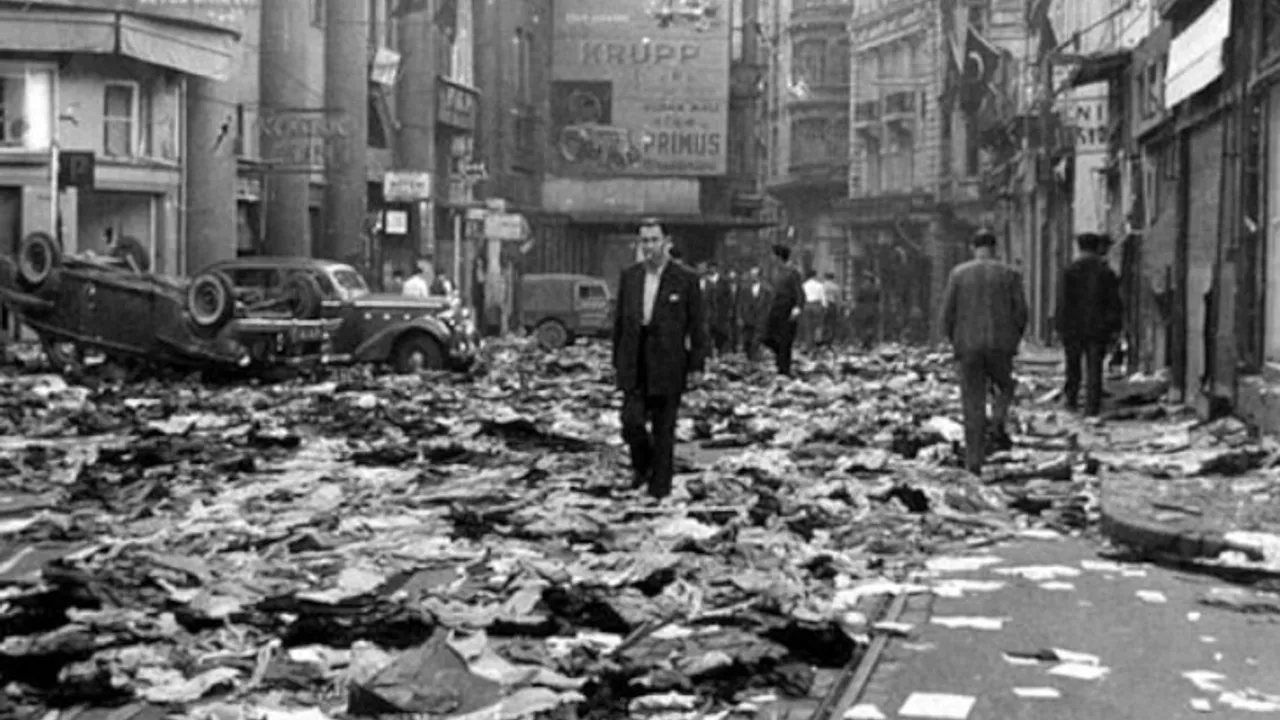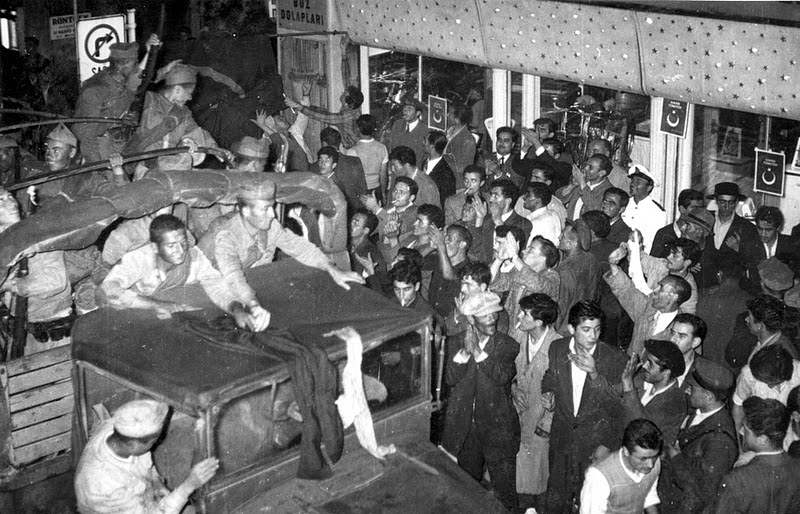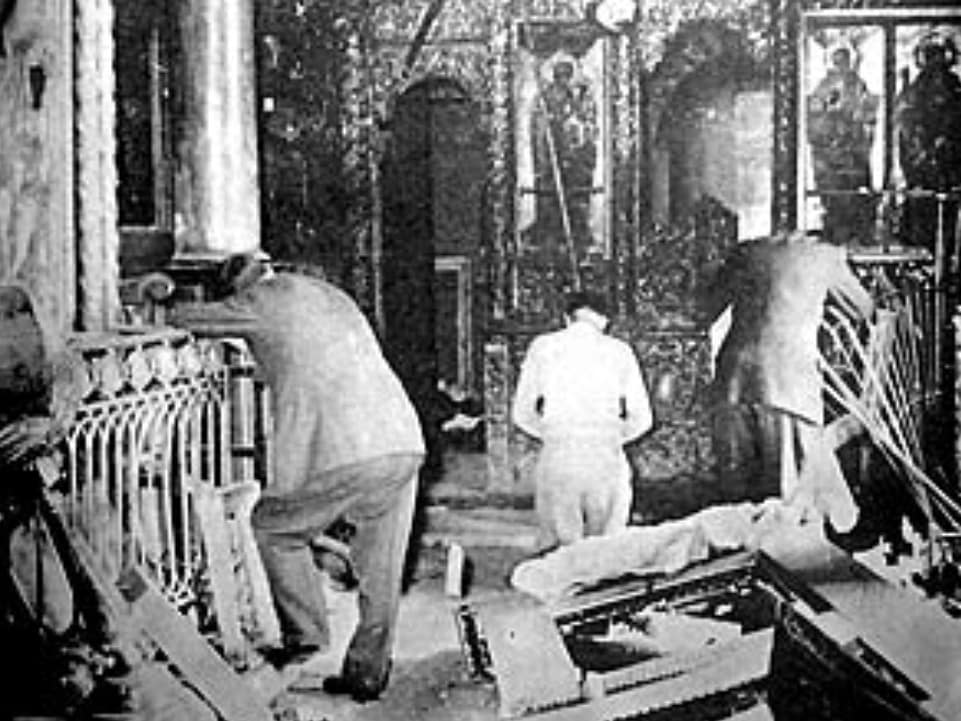The pogrom on September 6-7, 1955 in Istanbul targeted Greeks, Armenians and Jews, and the victims were exposed to savage, devastating violence.
Commenting on Turkey’s Kristallnacht, Armenian Ambassador to Athens Tigran Mkrtchyan, said: “In Istanbul September 6 to 7, 1955, Armenians, Greeks and Jews were massacred. The perpetrators of the massacres went unpunished.”
“Thousands of Armenians, Greeks and Jews were forced to leave their homeland. 67 years have passed since those events, but no action has been taken to identify the culprits – a fact, which further contributed to creating an atmosphere of impunity in this country.
“Today, we bow in reverence to the innocent victims. Never again!”


The Greeks in Istanbul were a longstanding, thriving community comprised mostly of families of merchants. In 1955, their population was about one hundred thousand, and they were a prominent class in the city.
At the time, Turkish Prime Minister Adnan Menderes (1950-1960) sought to appeal to the conservative religious faction of the Turkish population, causing irritation in the country’s secular Kemalist establishment. The thousands of mosques built during his time as PM are proof of this.
At the time in Istanbul, the Muslim population was not as prosperous as the Greek, Armenian and Jewish communities.
Terror unleashed against the Greek community of Istanbul over two days beginning on September 6, 1955 in much the same fashion as Nazi Germany’s Kristalnacht.
The Pogrom, or violent riot aimed at a particular ethnic group, against the Greeks of Istanbul broke out on September 6, 1955 after reports circulated that Greeks planted a bomb at the Turkish Consulate in Thessaloniki, which is housed in the residence where Kemal Ataturk, the founder of the modern Turkish state, was born.
The perpetrator of the bomb was a Turkish usher at the consulate named Oktay Engin, who was arrested by Greek authorities.
Turkish media was silent about the arrest and continued to push the idea that it was a Greek who set off the bomb.
Engin later became a hero in Turkey. He was honored in Turkey and appointed provincial governor.
Years later, in an interview with the Greek newspaper Eleftherotypia, Engin denied any connection with the incident and considered himself a victim of Greek authorities.
The blast at Ataturk’s home caused only minor damage to the building’s windows, but Turkish newspapers took advantage of the situation.
Following government instructions, they magnified and distorted the event. Headlines such as “Greek terrorists destroyed Ataturk’s paternal home” of the Istanbul Express and the publication of a series of fake photos of the incident sparked “spontaneous” demonstrations in Taksim Square in the afternoon of the same day.
At five o’clock in the afternoon, a raging crowd of fifty thousand people turned against the Greek properties in the Pera district.
The looting lasted until the morning hours of September 7th, when the army intervened, as the situation was in danger of spiraling out of control.
Until then, the authorities remained apathetic. Menderes’ Democratic Party, which controlled the unions, played a catalytic role in the rioting.
Large numbers of protesters were transported to Istanbul from West Asia Minor for free to take part in the pogrom against the Greek community.
Four thousand taxis transported them to the scene of the riots while trucks of the Municipality of Istanbul were deployed in parts of the city, loaded with axes, shovels, bats, pickaxes, hammers, iron crowbars, and petrol cans, necessary tools for the mob that attacked the Greek stores.
They shouted slogans like “death to the giaourides (faithless)” and “break it, tear it down, he is giaouris.” “Slaughter the Greek traitors” and “down with Europe” were other common slogans and many shouted about “[marching] against Athens and Thessaloniki.”
Although the rage was directed against the Greeks, the anger of the mob did not spare shops owned by Armenians and Jews.
Men and women were raped, and according to the testimony of the famous Turkish writer Aziz Nesin, many priests were forced to be circumcised, with one of the victims being an Armenian priest. Sixteen Greeks lost their lives and thirty-two were severely injured.
Violence against the Greeks took place not only in Istanbul but also in Izmir, or Smyrna. On the morning of September 7th, Turkish nationalists set fire to the Greek pavilion at the Izmir International Fair.
They then destroyed the newly built church of Agia Fotini, while looting the homes of Greek soldiers serving at NATO Headquarters.
READ MORE: Erdoğan’s new threats against Greece: “We may suddenly come one night.”
Related posts:
Views: 0
 RSS Feed
RSS Feed

















 September 7th, 2022
September 7th, 2022  Awake Goy
Awake Goy 

 Posted in
Posted in  Tags:
Tags: 
















